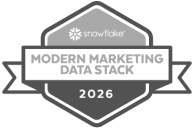How does data lineage differ from an audit trail?
Data lineage involves the comprehensive tracking and documentation of data's journey as it flows through various systems within an organization. It provides clarity on how data is sourced, processed, and consumed, highlighting its transformations. To gain a deeper understanding of this concept, delve into the complete guide to data lineage.
Conversely, an audit trail is a chronological log that captures changes, such as additions and deletions, made to data or financial accounts, ensuring accountability and compliance with regulatory standards.
Key distinctions
While both data lineage and audit trails serve to track data, they differ in focus and application:
- Data lineage emphasizes the data's journey and transformations, whereas an audit trail records changes to data over time.
- Data lineage is more concerned with the flow and quality of data.
- Audit trails are crucial for detecting fraud and errors.
- Data lineage tools often include visualization features to comprehend complex data relationships.
- Securing audit trails against tampering is essential for robust data governance.
How does data lineage enhance data governance?
Data lineage is pivotal to data governance by providing transparency into a data's lifecycle. It ensures data quality, regulatory compliance, and informed decision-making based on reliable data. For insights into how automated processes enhance governance, consider examining how automated data lineage improves governance and compliance.
By mapping the data's path, lineage tools help identify root causes of data issues, facilitating quick resolution and improving data integrity.
Benefits of data lineage in governance
Data lineage supports governance through:
- Data mapping: Offers a clear map of data's origin, touchpoints, and destination, crucial for governance.
- Regulatory compliance: Assists in complying with data protection regulations by documenting data flows.
- Collaboration: Enhances collaboration among data teams by providing a common understanding of data processes.
What is the significance of an audit trail in data security?
An audit trail is integral to data security as it records every action on data, creating a verifiable history that can be analyzed for unauthorized access or changes. This historical record is crucial for investigating security incidents and ensuring compliance with data protection laws.
Moreover, audit trails can deter malicious activities by ensuring all actions are logged and traceable.
Audit trail's role in security
Key roles of audit trails in data security include:
- Detection: Assists in detecting and analyzing data breaches or unauthorized changes.
- Compliance: Essential for meeting legal and regulatory requirements for data security.
- Vulnerability identification: Regular auditing can enhance security measures by identifying potential vulnerabilities.
Is data lineage a type of audit trail?
While data lineage can be viewed as a specialized form of an audit trail, it focuses on tracking the flow and transformation of data rather than merely recording changes. Data lineage provides context and understanding of the data's journey, which extends beyond the scope of a traditional audit trail. Explore the capabilities of data intelligence tools that facilitate such tracking.
Both concepts overlap in their aim to provide transparency and traceability of data-related activities.
Complementary roles
Data lineage and audit trails complement each other by:
- Detailed view: Data lineage offers a detailed view of data's path that can enhance a broader audit trail.
- Governance strategy: Both contribute to a comprehensive data governance strategy.
- Implementation: Understanding the distinction aids organizations in implementing appropriate tracking mechanisms for diverse needs.
What are the challenges in distinguishing data lineage from audit trails?
Distinguishing data lineage from audit trails can be challenging due to their overlapping functions in tracking and documenting data. Complexity increases with the volume and velocity of data within an organization.
Additionally, the terminology and scope of these concepts may vary across industries and regulatory environments, adding to the confusion.
Addressing differentiation challenges
Challenges in differentiation include:
- Framework integration: Both are part of a larger data governance framework but serve different purposes.
- Tool integration: Organizations may find it difficult to integrate tools that provide both functionalities cohesively.
- Education: Clear communication and education within data teams are essential to differentiate and leverage both effectively.
What is Secoda's data lineage platform?
Secoda's data lineage platform is a comprehensive solution designed to help organizations track and manage the flow of data across their systems. This platform provides a visual representation of data movement, allowing users to understand the origin, journey, and destination of their data. By offering detailed insights into data processes, Secoda's platform enables businesses to ensure data accuracy, compliance, and efficiency.
With features such as automated data mapping, real-time updates, and customizable dashboards, the platform caters to a wide range of data management needs. It supports various data sources and integrates seamlessly with existing infrastructure, making it a versatile tool for organizations looking to enhance their data governance practices.
To learn more about how this platform can transform your data management processes, explore Secoda's data lineage platform.
How does Secoda's data lineage platform benefit your business?
Implementing Secoda's data lineage platform can significantly improve your business operations by providing transparency and control over your data processes. Here are some key benefits:
- Enhanced Data Quality: By tracking data flow, the platform helps identify discrepancies and errors, ensuring data integrity and reliability.
- Regulatory Compliance: The platform's comprehensive tracking capabilities assist in meeting industry regulations and standards, reducing compliance risks.
- Improved Decision Making: With clear insights into data movement, decision-makers can make informed choices based on accurate and up-to-date information.
- Operational Efficiency: Automated data mapping and integration streamline processes, saving time and resources for your organization.
- Scalability: The platform's ability to handle diverse data sources and large volumes of data makes it suitable for growing businesses.
Why should you get started with Secoda today?
Secoda offers a robust solution for businesses looking to optimize their data management strategies. By choosing Secoda, you gain access to a platform that not only enhances data governance but also drives operational efficiency and compliance. Here's why you should get started today:
- Immediate Benefits: Start experiencing improvements in data quality and process efficiency from day one.
- Expert Support: Our team of experts is ready to assist you in implementing and maximizing the benefits of the platform.
- Customizable Solutions: Tailor the platform to suit your specific business needs and objectives.
Don't miss out on the opportunity to transform your data management practices with Secoda. Get started today and see the difference.






.png)
.png)








